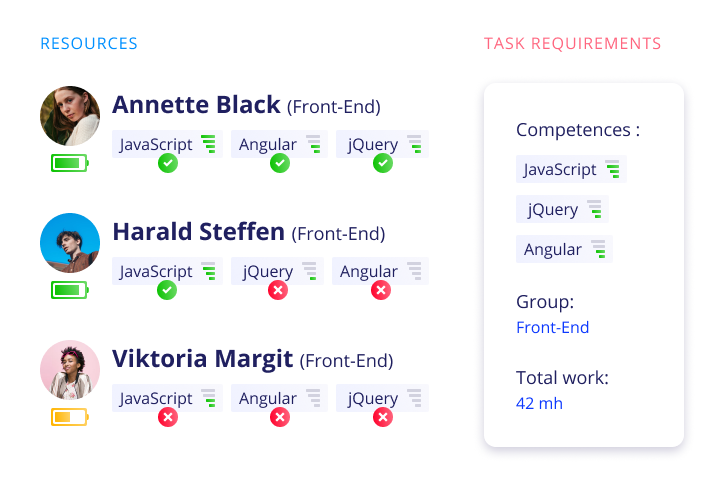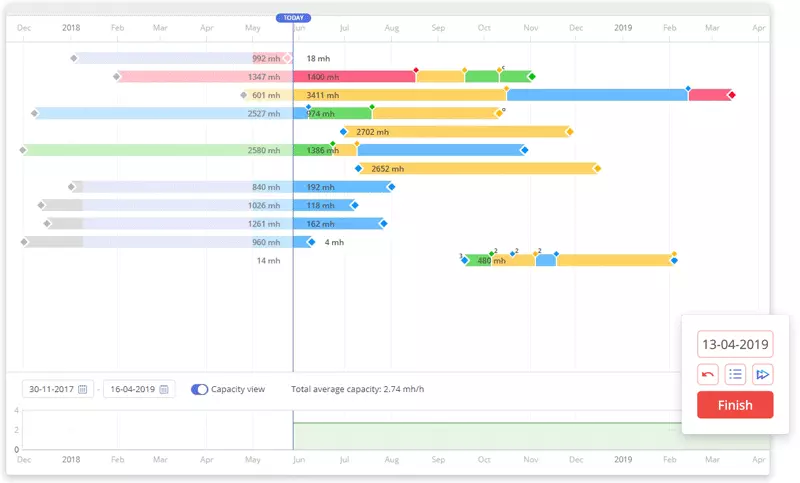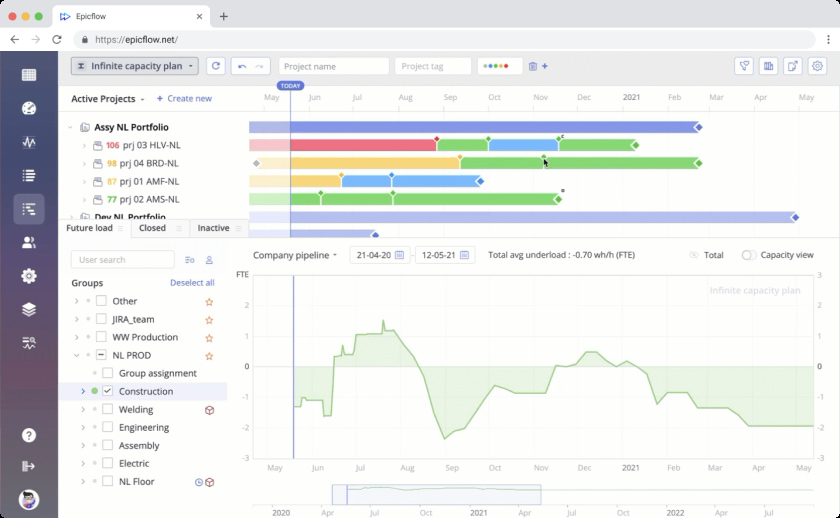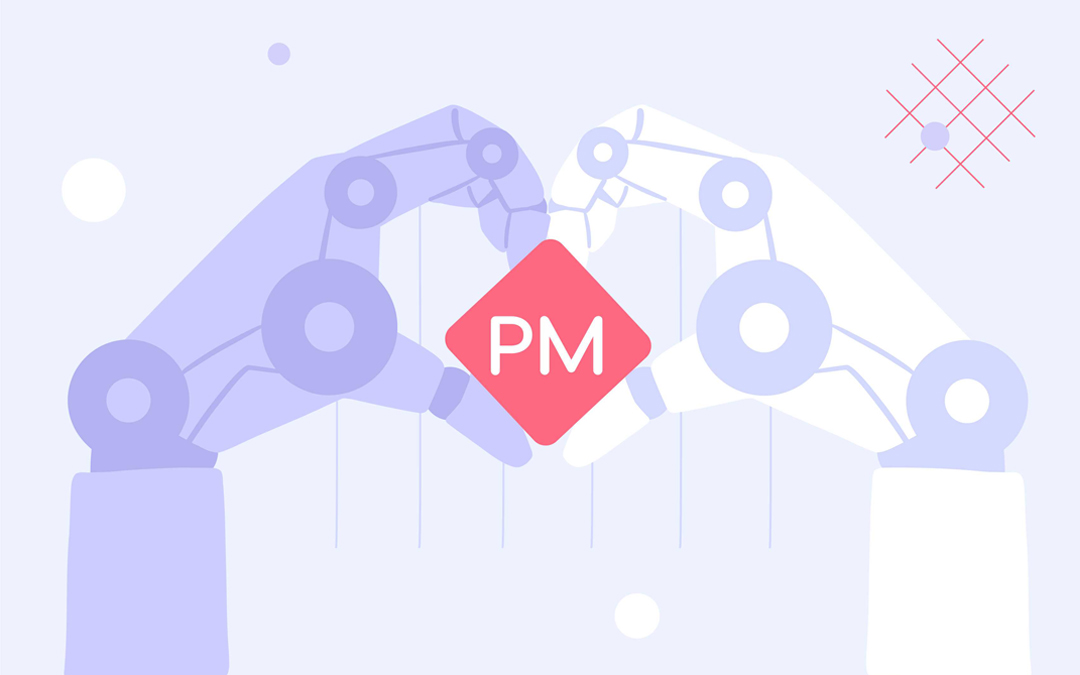According to a report by Wellingtone, 82% of business organizations have a project management office. And that’s no wonder – an effectively working PMO can streamline a company’s project management processes, improve their outcomes, optimize costs, and facilitate achieving an organization’s business objectives. However, despite their increasing popularity and significance, PMOs face a number of difficulties. Read the article to learn about the most common PMO challenges and find out the ways to address them.
What Are the Common Challenges Faced by PMO?
A project management office is the key organizational unit that establishes project management standards, ensures high performance of projects, and aligns them with the organizational strategy. Here are the typical challenges PMOs face in their work.
PMO challenge #1. Lack of senior executives’ buy-in and poor strategic alignment.
Senior management’s support of the project management office’s activities is crucial for its effective functioning. But sometimes, the executives can to some extent distance themselves from a PMO’s activities and remain uninvolved in them. Here are some negative consequences of senior management’s uninvolvement:
- Communication is ineffective, which causes ambiguity and misunderstandings;
- It becomes challenging to gather clear requirements for projects;
- The management doesn’t provide enough resources requested for PMO’s initiatives;
- Senior management doesn’t understand the value that a PMO provides to an organization.
Finally, it becomes difficult for a PMO to ensure strategic alignment of projects with business goals. Analyzing a company’s business objectives and aligning projects accordingly is one of the main functions of a project management office. However, it can be easier said than done. For example, if communication between a PMO and senior management is poor, they have a poor understanding of a company’s mission, or the senior management isn’t involved in PMO’s activities. These factors will prevent PMOs from achieving effective strategy execution.
Possible solutions
There are two aspects that can solve this PMO problem and help increase the level of senior management’s involvement. The first is maintaining regular communication with them using multiple channels. The second and most important thing is to convince the management of the value delivered by a PMO – various reports reflecting the results of a project management office’s activities as well as real-time progress of projects can be used for this purpose.
How can you ensure strategic alignment?
- You should assign people responsible for aligning PMO’s projects with strategic goals and objectives.
- Monitor strategic key performance indicators.
- Make sure that all the PMO members have a clear understanding of business objectives and how they can be achieved.
PMO challenge #2. Resource management challenges.
Efficient allocation and management of resources across all projects running in a company, especially under conditions of resource constraints, is probably the biggest PMO issue they have to deal with. Staffing concurrent projects with the right people becomes so demanding for the following reasons:
- poor resource planning,
- a lack of prioritization,
- resource conflicts,
- limited resource availability — a lack of employees with the required skills,
- uneven distribution of workloads between project team members (overload and idleness),
- poor visibility into resource-related data (resource demand; team members’ competences, capacity, performance, etc.).
All these challenges not only make it impossible to staff projects with the right people but also significantly reduce team members’ productivity and the quality of their output.
Read more: How to Plan Resources for Multiple Projects: A Step-by-Step Guide [2025]
Possible solutions
The recommendations below will help you address PMO resource management challenges as well as manage and utilize resources across multiple projects more efficiently.
- Forecast future resource demand and bridge it with the available capacity before starting a new project – this will reduce the probability of resource shortages and unplanned hiring;
- Prioritize projects and tasks – it will help you eliminate resource conflicts, increase team members’ productivity, and ensure that a company runs projects that bring the biggest value to it;
- Analyze resource performance to spot and prevent bottlenecks in the workflow before they affect other projects;
- Keep track of team members’ competences to assign the right resources to the right tasks;
- Select the right resource management solution – it will help you implement all the above-mentioned solutions and provide numerous opportunities for effective management of a company’s shared resources and successful delivery of every project in the portfolio. We’ll review the RM solution’s capabilities later in more detail.

PMO challenge #3. Changes to the project portfolio.
Changes made to a project require careful attention, especially when you have multiple projects in the pipeline with dependencies between them. PMO has to deal with changes when, for example, an organization’s strategic goals change or stakeholders require some modifications to a project. It can be difficult to manage these transformations, especially when a PMO already has difficulties with managing resources, poor project prioritization, or a lack of proper communication with senior management. If not addressed properly, changes can lead to:
- the need for rework, which results in delays and excessive expenses;
- excessive workload, which leads to bottlenecks affecting the work on other projects;
- shift in priorities, which results in misalignment with an organization’s strategy, etc.
Also, if changes cause problems in one project, the other ones in the portfolio can be affected as well.
Possible solution
You can’t avoid changes at all – they are an integral part of project management. But the first and foremost thing to deal with transformations and related possible challenges is to implement a clearly defined change control process. Upon receiving a change request from a stakeholder, it’s necessary to analyze the consequences of implementing it (and not implementing), what aspects of a project will be affected, and what is required for the requested modifications’ implementation. The decisions regarding changes should be made only after this thorough analysis.
Read more: Changing Requirements in Project Management: How to Stay on Track
PMO challenge #4. Poor understanding of stakeholders’ requirements.
Stakeholders’ requirements play an important role in steering the project management process – when they are clear, detailed, and aligned with an organization’s strategy, the project will produce the desired outcomes from which an organization can benefit.
However, poor communication between a PMO and stakeholders and improper understanding of their needs may lead to some challenges, for example:
- Irrelevant requirements – e.g., when real requirements are substituted with the ones relevant to previous projects;
- The requirements aren’t aligned with a company’s strategic goals;
- Requirements provided by stakeholders aren’t detailed enough and cause ambiguity.
Possible solutions
- First of all, you should establish maximum effective and transparent communication with the stakeholders.
- When gathering requirements for a project, it’s important to ask as many clarifying questions as possible, so that there is no ambiguity regarding stakeholders’ expectations.
- Having gathered the requirements, you should document them and get the stakeholders’ final approval. In this case, there’ll be more chances for the final deliverable to meet their needs.
Read more: How to Compile a Project Requirements Document
Overcoming the above-mentioned challenges and achieving high project performance will become more effective with the right resource management or PPM software. Let’s review these tools’ capabilities suitable for project management offices.
How a Resource Management Solution Assists PMOs in Their Activities: Epicflow Example

As we’ve mentioned earlier, proper resource management is often challenging for a PMO, so resource management software can become their indispensable helper. In particular, RM solutions have a variety of capabilities that allow project management offices to perform their functions much more efficiently. Let’s consider the example of Epicflow, a multi-project resource management solution. Here are some of the capabilities that bring value to a project management office’s work.
Centralizing all project- and resource-related data.
Epicflow eliminates project- and resource-related data silos and becomes a single source of truth for all project participants – project and resource managers, team members, and stakeholders.
Smart resource allocation.
In Epicflow, the data on team members’ competences, availability, and capacity is always at hand so that you can quickly and easily assign a necessary person to a task. Assigning team members in such a way makes it possible to maximize their efficiency, maintain their healthy workload, and prevent bottlenecks.

Automatic reporting.
Project status reporting heads the list of activities performed by a PMO, according to the report by Welligntone. At the same time, gathering data and compiling reports manually can be incredibly time-consuming. Epicflow can generate project status reports automatically, which saves a project manager’s time and effort.
Facilitating making informed decisions.
Epicflow’s AI-powered scenario analysis tool makes it possible to change different parameters in the simulated environment and test various management decisions – e.g., how to resolve a bottleneck, how the project setting will change upon adding a new project, how changes will affect the workflow, etc. Informed decisions will reduce the risks of taking unreasonable actions and have a positive impact on the workflow and project outcomes.

Forecasting capabilities.
Epicflow helps forecast and reveal bottlenecks – their timely detection protects the workflow from bigger problems like project delay and cost overrun. Forecasting future capacity and workload helps plan resources for upcoming projects – it helps bridge the resource demand with the available capacity.
Providing a comprehensive overview of all projects running in a company.
Monitoring the state of a project environment is one of the essential functions of a PMO. Epicflow provides a bird’s eye view of all projects running in a company, both at micro and macro levels, and warns you of tasks and projects that require immediate management actions.

Thus, Epicflow’s powerful features ensure optimum resource utilization and performance, help prevent problems in the workflow, and facilitate delivering all projects in the portfolio on time and within budget. To learn more about Epicflow’s capabilities that assist PMOs with the effective management of multiple projects and their shared resources, book a consultation with our specialists.
Future Trends Impacting PMOs in 2025
The work of project management offices is greatly impacted by the prominent project management trends of 2025. Here are the most significant tendencies to consider.
1. Data-driven decision making.
Increased use of data and artificial intelligence facilitates intensive use of these technologies in the decision-making process. For example, PMOs can use AI and data analytics for forecasting bottlenecks and risks and planning responses to them or test different resource allocation options in resource-constrained environments.
2. Focus on value creation.
PMOs are shifting their focus from delivering projects on time and within budget to delivering specific outcomes for business organizations. It’s becoming more and more essential to ensure customer and stakeholder satisfaction, high business impact and return on investment, as well as focus on value creation in the long run.
3. Increased use of PMO tools.
PMOs are increasingly leveraging software solutions that offer real-time data synchronization; AI-driven features like scenario planning, forecasting, resource allocation, reporting, etc.; remote collaboration capabilities; and integration with other tools like project/resource management software, ERP, HRM, etc.
4. The need for acquiring new skills.
Similarly to project managers, PMO members need to acquire new skills that will allow them to work in increasingly digitalized and dynamic environments. These skills may include data literacy and analytics, strategic thinking, emotional intelligence, and change management.
5. The rise of EPMO.
Rapidly growing or large enterprises are increasingly establishing enterprise PMOs or EPMOs. These organizational departments coordinate cross-departmental projects and programs, facilitate enterprise-wide prioritization, and ensure alignment with long-term strategic goals.
Conclusions
A project management office has an essential role in ensuring consistency across project-related processes, driving strategic alignment, efficient management, and utilization of shared resources across projects as well as increasing project success rates.
At the same time, the effectiveness of PMO activities can be hampered by specific challenges, from a lack of stakeholder support to resource management challenges. Among other things, overcoming these challenges involves leveraging robust software tools that help manage resources effectively, make data-driven decisions, ensure comprehensive visibility into all project-related processes, and increase the effectiveness of PMO work.
Frequently Asked Questions
What is a PMO challenge?
The most common PMO problems include: a lack of support from senior executives, resource management challenges, misalignment with strategic goals, managing changes, and poor understanding of stakeholder requirements.
What are the weaknesses of PMO?
The weaknesses of PMOs may involve the following issues: a lack of required resources, bureaucracy affecting decision-making as well as inability to ensure strategic alignment and deliver value.
How to overcome PMO challenges?
To address typical PMO issues, organizations should involve senior leaders in some aspects of PMOs’ work, manage change effectively, track and discuss PMO KPIs, and be Agile and adaptable.
What are the main challenges and obstacles in implementing PMO?
Companies may face the following obstacles when establishing a project management office: poor executive support, resistance to change, a lack of required resources, misalignment with the business strategy, bureaucracy, and changing organizational needs.






